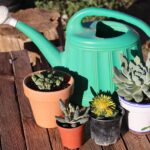Why Water-efficient irrigation techniques in Utah: Urban areas such as Salt Lake City and agricultural regions rely heavily on water from the Great Basin.?
Technological Innovations in Water Management, etc
The Great Basin: A Thirsty Land
The Great Basin is facing a critical water shortage due to climate change, drought, and overuse. Water evaporates from lakes, rivers, and the ground, only to be lost to the dry air.
Solutions lie in using water more efficiently and employing new technologies like water-monitoring sensors and drones.
Thirsty Land: The Great Basin’s Water Story
TL;DR The Great Basin is a big, dry region facing a water shortage problem. Climate change is making things worse, and people are working on solutions like saving water and using new irrigation techniques. One group called Active Climate Rescue is helping to find answers to this challenge.
A Land of Limited Water
Imagine a giant bathtub with just a tiny trickle of water coming in. That’s what the Great Basin is like. It’s a huge region in the western United States, including parts of Nevada, Utah, California, Oregon, and Idaho. The Great Basin is known for its deserts and mountains, but it doesn’t get a lot of rain.
The water cycle here works like this:
- Evaporation: The sun heats up water in lakes, rivers, and the ground, turning it into vapor and sending it up into the air.
- Condensation: As the vapor rises, it cools and turns back into tiny water droplets, forming clouds.
- Precipitation: When the clouds get full of water, the droplets fall back to the earth as rain, snow, or hail.
- Collection: The water collects in rivers, lakes, and underground, where it can be used by plants and animals.
The Great Basin is unique because most of the water that falls as rain or snow stays within the region. It doesn’t flow out to the ocean like many rivers do. This means the water in the Great Basin is very precious.
Utah’s Thirst
Cities like Salt Lake City and agricultural areas in Utah rely heavily on water from the Great Basin. These places need water for drinking, farming, and industry. But the water supply is limited, and the demand is growing.
A Growing Problem: Water Shortages
Over the past few years, the Great Basin has been experiencing a serious water shortage. There are a few reasons for this:
- Climate Change: The Earth’s climate is changing, and that’s affecting the water cycle. Temperatures are getting hotter, which means more water evaporates, leaving less for rivers and lakes.
- Drought: Drought is a period of unusually low rainfall, and the Great Basin has been experiencing more frequent and severe droughts.
- Overuse: People are using water faster than it can be replenished. This is especially true in areas with growing populations and increasing agriculture.
Finding Solutions: Saving Water and Technology
To address the water shortage crisis, we need to find ways to use water more wisely. Here are some ideas:
- Water Conservation: Simple things like taking shorter showers, fixing leaky faucets, and watering lawns less can make a big difference.
- Water-Efficient Irrigation: New irrigation techniques like drip irrigation can deliver water directly to plant roots, saving water and reducing evaporation.
- Technological Innovations: Scientists and engineers are developing new technologies to help us manage water resources more efficiently, like using sensors to monitor water levels in reservoirs or using drones to track water use in fields.
Active Climate Rescue: A Beacon of Hope
The Active Climate Rescue Initiative is one organization dedicated to solving the Great Basin water supply shortages. They are working on a variety of projects, including:
- Developing new water-efficient irrigation systems: They are testing and promoting innovative ways to get water to crops without wasting it.
- Protecting and restoring wetlands: Wetlands are important for filtering water and storing water for future use. Active Climate Rescue is working to protect these vital ecosystems.
- Educating communities: They are teaching people about the importance of water conservation and how they can make a difference.
A Summary of the Challenges and Solutions
The Great Basin is facing a serious water shortage problem due to climate change, drought, and overuse. But there is hope. By conserving water, using new irrigation techniques, and investing in innovative technologies, we can help ensure that this precious resource is available for future generations. Organizations like Active Climate Rescue are actively working to find solutions to this critical problem, and their efforts are a reminder that we can make a difference.
More on Water-efficient irrigation techniques…
- ## SEO Keywords for Water-efficient Irrigation Techniques & Technological Innovations in Water Management:
- General Keywords:
- Water-efficient irrigation
- Water conservation irrigation
- Smart irrigation
- Water management technology
- Irrigation innovation
- Sustainable irrigation
- Water saving irrigation techniques
- Efficient water use in agriculture
- Water scarcity solutions
- Water conservation strategies
- Water technology advancements
- Specific Techniques:
- Drip irrigation
- Micro-irrigation
- Sprinkler irrigation systems
- Subsurface irrigation
- Water-saving sprinklers
- Smart controllers
- Soil moisture sensors
- Weather-based irrigation
- Water budgeting
- Water auditing
- Irrigation scheduling
- Irrigation efficiency optimization
- Technological Innovations:
- IoT in water management
- Smart irrigation systems
- Water sensor technology
- Remote water monitoring
- Water data analytics
- Artificial intelligence in irrigation
- Precision irrigation
- Water modeling
- Water resource management software
- Drone technology for water monitoring
- Satellite imagery for water management
- Target Audience & Applications:
- Residential irrigation
- Commercial irrigation
- Agricultural irrigation
- Landscape irrigation
- Municipal water management
- Industrial water management
- Drought-tolerant landscaping
- Urban water conservation
- Benefits & Advantages:
- Water savings
- Cost savings
- Environmental benefits
- Reduced water waste
- Increased plant health
- Sustainable water use
- Climate change adaptation
- Water security
- Industry & Market:
- Irrigation industry
- Water management industry
- Water technology companies
- Sustainable agriculture
- Water conservation initiatives
- Geographic Location:
- [Specific Region] water-efficient irrigation
- [Specific Region] water management technology
- [Specific Region] drought solutions
- Examples of Keyword Combinations:
- Water-efficient irrigation techniques for residential landscapes
- Smart irrigation systems for agriculture
- IoT in water management for urban areas
- Water conservation strategies for commercial buildings
- Benefits of precision irrigation in drought-stricken regions
- Technological innovations in water resource management
- Sustainable irrigation practices for climate change adaptation
- Long-Tail Keywords:
- How to choose the best water-efficient irrigation system
- What are the benefits of using drip irrigation?
- How to install a smart irrigation controller
- What are the latest technological advancements in water management?
- Case studies on successful water conservation initiatives




